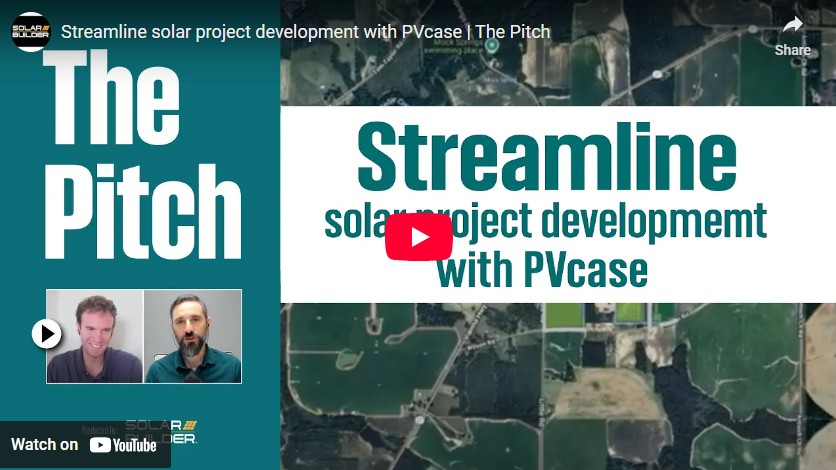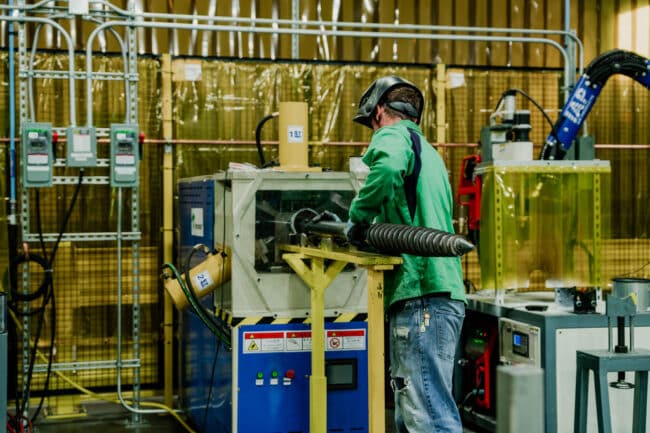Mounting Pressure: Today’s large-scale PV boom demands new levels of service from racking companies
Turnkey services rule the day
Value-add services have always been a key component of successful designs as well as achieving target pricing, Owen notes.
“The industry simply cannot afford complacent designs and offerings,” he says. “We must always be flexible and open minded to achieve what it takes to create a successful project. This could require simple things such as the testing of alternative fastening methods all the way to pre-panelization inside our facilities.”
In February, Omco Solar launched Omco Racking after a year of trials. This business unit provides a racking system parlayed with structural analysis as well as the installation of their mounting structures and the modules. Out of the 7.5 GW of PV systems that the company has shipped to date, 80 to 90 percent have had elevated levels of assembly, Owen says.
Turnkey also can mean “whatever the customer needs.” There’s a shift from a period of installation specialists — i.e. teams that only install modules or only install piles — to full-scope installation providers capable of handling geotechnical/pre-project pull testing, post driving, on-site ballast casting, racking installation, module installation and more. Leaders in this shift have been racking manufacturers that have expanded their service offerings over the years. SunLink has honed in on this approach, Troia notes, offering both a full-scope mix of mounting systems plus a menu of services ranging from geotechnical testing to installation to long-term O&M.
“Our customers are able to tailor whatever products and services solution that allows them to focus on what they do best and to take on more projects successfully,” Troia says.
Proprietary technology also favors turnkey solutions, such as TerraSmart’s specialized foundation technology. “We work with our clients to develop bankable racking; procure and manufacture in-house; and deliver to project sites with in-house logistics; perform surveys, drilling, steel erection and other construction services,” Benvie says.
RELATED: PV Pointers: How dynamic systems increase the value of a solar project
Designed for time savings
BOS cost reduction and installation efficiency begins on the drawing board. “Swiss cheese mounting designs take a much longer time to install than integrated systems; construction companies also can wind up with a different set of blueprints every day,” Owen says.
Following up on that, Kate Trono, VP of product at SunLink, lists the numerous efficiency improvements that are possible:
- Variable row lengths to conform to terrain, site boundaries and string lengths;
- Wireless communication and data integration at the plant controller level, so that all tracker data is consolidated;
- Increased tolerances throughout the mounting systems; more consistent reporting of top of post heights to ensure installations meet expectations;
- Terrain contour following vs. straight module alignment; and
- Increase in kitting or pre-assembly of components before shipping to the actual site.
ATI frequently modifies its designs to facilitate and speed installation. “We went to hexagonal tubes in our v3 design about a year ago, and that enables workers to attach connection components in the correct position in batches before lifting a tube up for insertion,” Reeves says. “We kit and pallet so that the contractor doing the work can open the box and start building right away.”
Building an adaptable, failure-proof system also takes a substantial investment of time and attention, reckons Ron Corio, CEO of ATI. “When we have a problem, we investigate it very proactively because when you have one problem, it can multiply itself a thousand times.”
Tailored solutions for difficult terrain also drive time-saving proprietary designs. TerraSmart engineers have developed racking systems that feature adjustability in the necessary areas while not making the racks difficult to construct. “Our expertise lies in sites that require ground screws, meaning we need to be prepared to accommodate extreme slopes and terrain undulation,” Benvie says.
Assembly line metrics are slowly being utilized to measure BOS erection efficiency in the field. “Unfortunately, only recently has the industry begun getting into that realm of buyers using time studies,” Owen says. “More often than not, most systems differ greatly in the actual cost of field installation.”
Once assembly has been clocked, MW/man-hour goals can be set. At ATI, for example, “We have a goal of 1 MW per day with a crew of 40,” says Reeves.
Solving logistics nightmares
One logistics nightmare goes a long way in the highly competitive solar industry. “Two forces are at work putting new demands on project logistics, according to Troia.
“The first is an increasing adoption of large-scale construction best practices,” he says. “This evolution is affecting the industry in many ways, but among them is an adherence to tighter project timelines, including delivery windows.”
For example, you might have a three-hour window in which to complete delivery on a roof mount site to coincide with the limited availability of a crane. Or you might have a similar window in which to deliver components to a highway-adjacent, utility-scale ground-mount site, requiring access for eight trucks to a site that is only able to receive one truck at a time, causing a backup onto the road. These down-to-the-minute scheduling situations tend to require more capability than is available from a typical logistics partner.
“The second factor is the broad range of project sizes serviced by most mounting system suppliers,” Troia says. “Logistics departments need to be nimble enough and sufficiently scalable to accommodate huge variances in project sizes and the different planning measures required for each. The logistics needs of an average community solar project and a 300-MW utility-scale project are vastly different but equally important to satisfy.”
Charles W. Thurston is a freelance writer who covers solar energy from Northern California.





Comments are closed here.